Covid-19 illness and death in healthcare workers has resulted in legal action. Catherine Reilly reports
The HSE is facing legal claims arising from Covid-19 infection allegedly acquired in the workplace, while the Health and Safety Authority (HSA) is conducting 14 “preliminary investigations” into the deaths of healthcare workers following infections, the Medical Independent (MI) has established.
To date, one claim has been made against the HSE in relation to a healthcare worker fatality and one claim in regard to infection of a healthcare worker, said the State Claims Agency (SCA).
In relation to patients and residents, one claim has been made against the HSE pertaining to Covid-19 infection and five claims in regard to deaths. Three of these five claims relate to private nursing home deaths.
The SCA has engaged with the HSE on reporting incidents involving healthcare workers “where Covid-19 was acquired at work and provided guidance on such reporting”. Incidents are reported to the SCA through the National Incident Management System.
More than 28,000 healthcare workers have had a confirmed Covid-19 infection, according to data from the Health Protection Surveillance Centre (HPSC). As of 10 April, over 777 had been hospitalised, 100 admitted to intensive care, and 17 had died. Healthcare assistants and nurses constitute the main proportion of cases.
Just over 40 per cent of healthcare worker infections were categorised as healthcare setting-acquired, largely from other staff, in HPSC data covering a period from late November to mid-April.
A requirement to notify occupational cases of Covid-19 illness and deaths to the HSA, under the Biological Agents Regulations, has applied since 24 November 2020. As of 16 April, the Authority had received 557 Covid-19 notifications covering 932 cases of disease in employees in healthcare settings (ie, health and social care).
Records of an infection being determined as workplace-acquired could strengthen legal cases, MI understands. In general, however, establishing causation may be problematic, suggested a number of personal injury solicitors contacted by this newspaper (see panel).
Mr Barry Crushell, Principal Solicitor at Crushell & Co, Dublin, told MI: “One of the difficulties in bringing such a claim is proving that the exposure came from the workplace, as opposed to any other source.”
In personal injury law, the burden of proof is on the plaintiff to prove that, on the balance of probabilities, the defendant was negligent. The chain of causation explicitly relies on establishing a direct causal link between the actions and/or omissions of a defendant and the damages sustained.
The alleged ‘omissions’ of the healthcare facility could include insufficient or unsuitable personal protective equipment (PPE), or inadequate policies and procedures. The defence would likely argue that a healthcare professional may have been exposed to Covid-19 outside their workplace. In this context, their lifestyle would be scrutinised to establish other potential sources of the infection.
Mr Crushell believed such cases would be strengthened if the infection has been reported by the employer as workplace-acquired.
“If there is a record of the hospital or clinic acknowledging the employee contracted Covid-19 in the workplace, then I would say it is going to be very difficult for a defence solicitor to later argue that the infection arose from a different source, other than the workplace environment. The cards would very much be in favour of the plaintiff in that instance,” outlined Mr Crushell.
The defence may argue that this risk was inherent in a healthcare facility caring for patients with Covid-19, and the employer took all necessary steps to minimise the risk. As a matter of public policy, it may be contended that such a claim should not succeed as it could lead to a multitude of cases against the health service and State.
Damage to health
Covid-19’s serious consequences for healthcare workers are reflected in the mortality, critical care and hospital admissions data. A larger and undefined proportion are affected by ‘long Covid’ or ‘post-Covid syndrome’, a constellation of symptoms and morbidity spanning many clinical specialties and organ systems. Of importance, enduring symptoms and illness post-acute infection are affecting people who had both mild and serious disease.
A startling inventory of research is accumulating on the longer term sequalae of the infection
In July 2020, JAMA Cardiology published a German study of 100 patients recently recovered from Covid-19, who were identified from a test centre. Cardiac MRI revealed cardiac involvement in 78 patients and ongoing myocardial inflammation in 60 patients, which was independent of pre-existing conditions, severity, and overall course of the acute illness, and the time from the original diagnosis.
A study in The Lancet in January 2021 by clinicians in China reported that 76 per cent of patients discharged from hospital reported at least one symptom at six months after symptom onset, most commonly fatigue or muscle weakness and sleep difficulties. Additionally, 23 per cent of patients reported anxiety or depression at follow-up.
This month, research in The Lancet Psychiatry using the TriNetX electronic health records of over 236,000 patients with Covid-19, found the disease was “robustly associated” with an increased risk of neurological and psychiatric disorders in the six months after a diagnosis.
According to a World Health Organisation (WHO) policy brief on preparing for long Covid, approximately a quarter of people experience symptoms that continue for at least a month and one-in-10 are still unwell after 12 weeks. An emerging consensus on best practice points to the importance of a multidisciplinary and multispecialty approach to assessment and management, it outlined.
Care pathways
Occupational medicine specialists told MI there are no referral pathways for HSE or public healthcare staff with long Covid. In some hospitals, ‘post-Covid clinics’ have been established by clinicians (for all patients).
Clinical investigations, such as echocardiogram and CT, may be required to determine fitness to return to work. However, there are typically long waiting times for such tests, as well as for rehabilitation services and occupational therapy.
This is frustrating for occupational health professionals, who recognise that returning to work is an effective part of rehabilitation from many illnesses and is important to patients. They are also concerned about the lack of care pathways in the context of governance. Regarding staff referred to occupational health by management, one specialist asked, “where does governance lie for the patient’s health?”.
Some healthcare workers have been absent from work since March 2020. This is “a disaster” for their career, finances, and family life. “Statistically the chances of getting back to work are low [at this point]…. It is a very serious situation. The HSE has a duty of care to these people,” said the specialist.
Long Covid in healthcare workers is an “evolving” situation, which will not be ameliorated by the current lack of timely investigation and care pathways. Feelings may understandably harden, suggested the specialist.
“I am not sure it won’t go legal,” they added.
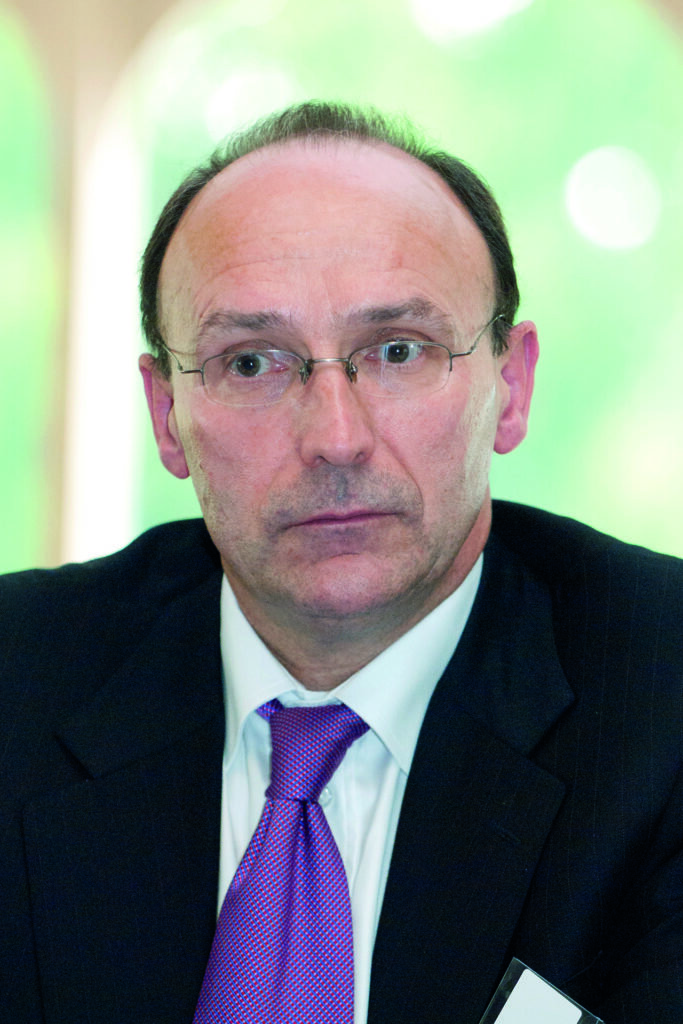
Another specialist noted international research on healthcare workers hospitalised in the SARS-CoV-1 outbreak, which found almost 30 per cent had not returned to work two years after illness onset.
The SCA informed MI it had not issued any “specific advice” to the HSE regarding long Covid care for staff.
Mr Martin Varley, Secretary General of the IHCA, said a HSE policy on long Covid “is urgently required”.
“This is currently under discussion between the HSE and employee representative organisations. The WHO has published revised clinical management guidelines on long Covid, which include recommendations on the use of care bundles to systematise care provision for Covid-19 patients.
“The decision to define care pathways for healthcare workers with long Covid remains with the HSE. This needs to be expedited. The NHS has earmarked significant funding to establish new long Covid clinics across England, to complement existing care. We need to examine the need to replicate this for Irish patients and healthcare staff.”
Mr Varley said the IHCA has been contacted for advice and support by a number of consultant members affected by and suffering from long Covid.
“More than a quarter of respondents to a recent survey of IHCA members, carried out in February 2021, confirmed that long Covid appears to be prevalent among staff who have contracted the disease and it is a major concern for them. This is supported by experience from the UK, where it is estimated that up to 30 per cent of doctors were affected beyond the acute Covid.”
The HSE’s special leave with pay (SLWP) arrangements for staff affected by Covid-19 only apply for 28 days before staff are expected to move to ordinary sick pay arrangements.
Extensions to SLWP may be granted by managers if a number of criteria are met, including confirmation from an occupational health physician that they are medically unfit for work. There is unhappiness among unions and occupational medicine specialists about the nature of this protocol.
“We call them all frontline heroes all the time,” commented Mr Kevin Figgis, Sector Organisor, SIPTU Health Division. “I think it is appropriate that we ensure they have the necessary supports when they need us, given they did it when we needed them.” In a broader sense, the healthcare unions are also seeking financial recognition for their members’ efforts during the pandemic.
Mr Anthony Owens, IMO Director of Industrial Relations (Consultants and NCHDs), told MI the longer-term implications for the health service and healthcare workers “continues to be a matter for engagement” between healthcare unions and employers.
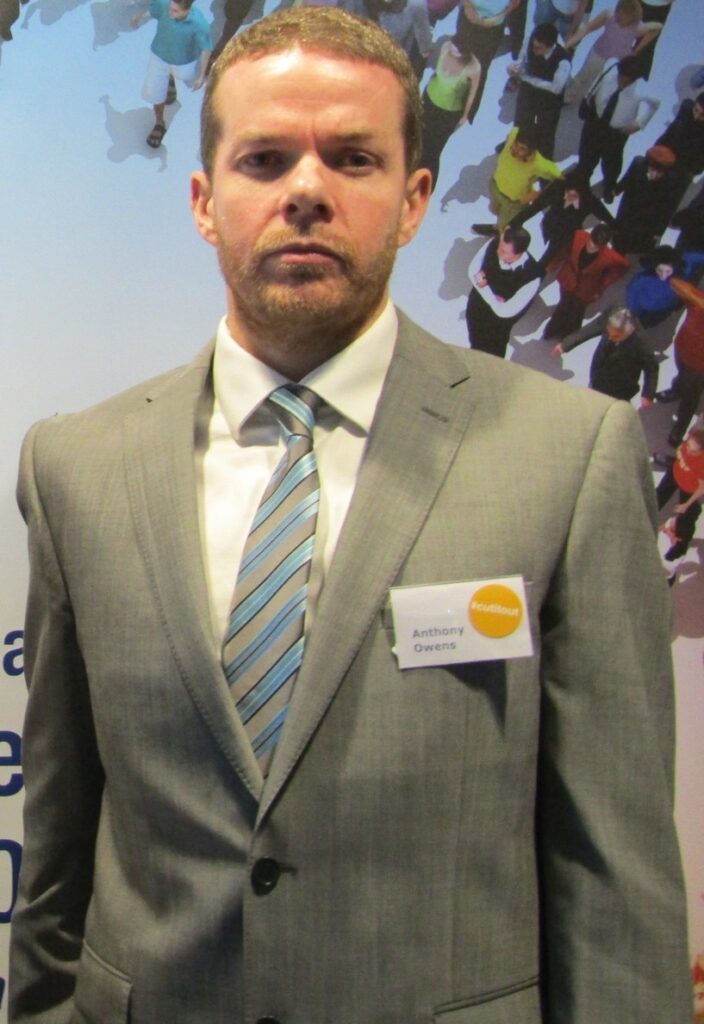
“However, as it becomes clearer that the aftershocks of the pandemic, including long Covid among healthcare workers are very real phenomena, it is incumbent on the HSE to ensure that there are sufficiently robust care pathways in place for those healthcare workers, with the ability to adapt those pathways as our understanding of long Covid increases.”
Mr Owens further drew attention to the need to properly resource occupational health departments.
“It has been observed that occupational health was the thin line that supported the frontline during the pandemic,” he said. “That thin line barely held, and we can’t expect that it will hold indefinitely given the tremendous pressure experienced by the far too few doctors providing the health service with in-house consultant-level expertise in occupational medicine.
“It is incumbent on all of the levels of health service management to properly resource and staff this service and address, definitively and as a priority, the disadvantageous contractual situation of consultants in occupational medicine.”
MI understands there is deep concern within the specialty about the growing control of the HSE’s Human Resources Division over occupational health departments and what this means for clinical autonomy.
From the start of the pandemic, some specialists in occupational medicine argued for stronger control measures including widespread use of respirator masks. But their advice on the measures they deemed necessary to protect healthcare workers and meet health and safety legal requirements was not heeded in national guidance, it is contended.
“Workers are our patients in occupational health and we owed them and their patients that duty of care,” commented one specialist, who said a public enquiry into pandemic control measures in healthcare and staff infections, is required.
Control measures
Was the HSE negligent in its provision of national guidance and implementation of control measures against SARS-CoV-2? Did it apply prevention and risk reduction measures to ensure that as far as technically practicable, the level of exposure of employees was reduced to “as low a level as necessary” as required under health and safety law?
Lack of mask fit-testing, concerns about adequacy of ventilation systems and out-of-date risk assessments, have been raised in inspections of healthcare facilities by the HSA – a body that some healthcare unions say should have had a more central role during the pandemic.
From 1 January to 16 April this year, the Authority has undertaken 123 inspections in the healthcare sector, mainly focused on the management of the risk of exposure to Covid-19. In the same period, it has issued 116 written advices and two improvement notices in the healthcare sector.
The cramped infrastructure and lack of isolation rooms in the acute system have limited the ability to minimise infection risk to patients and staff. As an example, a recently published HIQA inspection of Tallaght University Hospital reported that the resuscitation room within the emergency department was divided into five cubicles which shared the same ventilation system. The hospital had identified this as a risk in the context of aerosol-generating procedures, which were undertaken on a day-to-day basis.
The hospital was examining if two of the cubicles could be functionally separated, which would separate the resuscitation bays into Covid-19 and non-Covid-19 streams.
This report of the inspection, which took place in December 2020, also noted that “it is planned that a programme of fit-testing will be introduced once a consistent supply of FFP2 facemasks have been stabilised”. Deep into the pandemic, therefore, glaring shortfalls in hospital health and safety are being identified.
In the earliest days of the crisis, healthcare workers encountered problems accessing appropriate PPE. Speaking at the IMO AGM this month, GP Dr Maitiú Ó Faoláin recalled having to source PPE at a garden centre. He acknowledged supplies from the HSE had vastly improved over time.
The HSE’s process of developing and approving guidance on PPE and infection control in a fast-moving pandemic was unwieldy. An expert advisory group (EAG) under the national public health emergency team (NPHET) was deemed responsible for approving key guidance developed by the HSE’s infection control division.
While expert in their clinical fields, few EAG members had core competencies in advising on safe systems of work and workers’ health and safety.
At its maiden meeting on 5 February 2020, the EAG noted “a lot of uncertainty presently re: 2019-nCoV transmissibility”, but it approved a significant change to the initial guidance on PPE. The EAG agreed to updating recommendations which had originally advised aerosol/airborne precautions in acute hospital settings and contact and droplet precautions in primary care.
“In line with WHO guidance, this has been updated to droplet and contact precaution in both the acute sector and primary care. This guidance is in draft, and will be published shortly,” according to minutes. As a “caveat”, EAG members advised that hospital sites could continue using “higher protection” if part of their “normative practice”.
Days before this EAG meeting, on 2 February, the European Centre for Disease Prevention and Control (ECDC) issued guidance recommending that healthcare workers in contact with a confirmed or suspected case should wear PPE for contact, droplet, and airborne transmission of pathogens, including an FFP2 or FFP3 respirator tested for fitting.
In addition, early warnings from healthcare institutions in China referenced the need for “aggressive” measures to protect healthcare workers and cited evidence of asymptomatic spread.
In March 2020, the ECDC adapted its guidance to indicate surgical masks were acceptable when caring for confirmed or suspected cases, but only if there was a shortage of respirators. A similar position was adopted by the US Centres for Disease Control and Prevention (CDC).
The HSE pursued a policy of surgical mask wearing (not respirators) limited to healthcare workers providing close patient care to confirmed or suspected Covid-19 patients.
It subsequently changed this guidance in favour of universal masking of healthcare workers after several weeks of debate at the EAG, where concerns were expressed about potential increased transmission through improper wearing, and impact on mask supplies.
Some members queried the “governance” surrounding this decision before a majority recommendation in favour was reached on 10 April.
In the interim, some Irish hospitals had already mandated surgical masking for all healthcare worker/patient interactions due to real-world evidence of asymptomatic and pre-symptomatic transmission in healthcare settings.
The fourth update of the ECDC guidance in July 2020 drew attention to a systematic review and meta-analysis, which “estimated that respirators may provide a stronger protective effect compared to medical masks”.
The authors of this review in The Lancet, while acknowledging its limitations, stated that “for healthcare workers and administrators, our findings suggest that N95 respirators might be more strongly associated with protection from viral transmission than surgical masks”.
HSE guidance was based on an assessment that SARS-CoV-2 was “in most circumstances” a contact and droplet transmitted infection and “the evidence that surgical masks offer equivalent protection to respirator masks in this context”, a HSE spokesperson told MI in late 2020.
Throughout the pandemic, the role of aerosol transmission has been the subject of intensive debate in the medical, scientific, and engineering communities. However, amid much uncertainty, it has been argued that a precautionary principle should have been adopted – in favour of the highest possible control measures including respirator masks for all healthcare workers and more focus on improving ventilation systems.
A recent commentary in The Lancet (Greenhalgh et al) set out 10 scientific reasons in support of airborne transmission, including documented nosocomial infections in healthcare organisations where there had been strict contact and droplet precautions and use of PPE designed to protect against droplet, but not aerosol exposure.
Until early 2021, respirator masks were only recommended for aerosol-generating procedures in Irish guidance. In January, the HSE approved greater use of FFP2 masks on foot of pressure from the Irish Nurses and Midwives Organisation, following the emergence of the B117 variant. The HSE’s updated guidance does not mandate FFP2 masks for close patient care of suspected/confirmed cases, but suggests a choice between an FFP2 or surgical mask.
Other issues that warrant closer scrutiny include the operation of the HSE’s derogations policy during the pandemic.
In other jurisdictions, healthcare systems and political administrations are receiving blowback for failing to protect healthcare workers to the greatest extent possible.
The HSA’s preliminary investigations of 14 healthcare worker deaths, as well as legal claims, will place the response of the HSE, and other healthcare providers, under the spotlight.
A response from the HSE on issues raised in this article was awaited by press time.
The legal view on ‘workplace-acquired’ Covid
Establishing causation in cases of alleged workplace-acquisition of Covid-19 may be problematic in many instances according to feedback from personal injury law specialists.
Commenting in early April, Mr Barry Crushell, Principal Solicitor, Crushell & Co, Dublin, said: “We have yet to see any personal injury claims arise as a consequence of an employee acquiring Covid-19 in the workplace. One of the difficulties in bringing such a claim is proving that the exposure came from the workplace, as opposed to any other source.”
He noted that case law pertaining to personal injuries and employment rights, in the context of Covid-19, is “an evolving area”.
As an infectious disease, Covid-19 constitutes a biological hazard. In this context, there are duties on both employers and employees arising from the Safety, Health and Welfare at Work Act and the underpinning health and safety principles.
Crushell & Co is managing a number of cases, for both employers and employees, wherein employees resigned citing inadequate protective measures to prevent the spread of Covid-19. These cases do not involve healthcare settings.
In regard to a healthcare professional initiating a personal injuries case against their employer, arising from Covid-19-related illness, they would need to demonstrate the employer was negligent on the balance of probabilities.
The ‘but-for’ test may be applied: would the healthcare professional have suffered Covid-19 infection and illness ‘but-for’ the negligence of the medical facility?
Mr Crushell said the chain of causation explicitly relies on establishing a direct causal link between the actions and/or omissions of a defendant to the damages sustained.
The alleged ‘omissions’ of the healthcare facility could include insufficient or unsuitable personal protective equipment (PPE), or inadequate policies and procedures.
The defence would likely argue that a healthcare professional may have been exposed to Covid-19 outside their workplace. In that context, their lifestyle would be scrutinised to establish other potential sources of the infection.
Mr Crushell believed such cases would be strengthened if the infection had been reported by the employer as workplace-acquired.
“If there is a record of the hospital or clinic acknowledging the employee contracted Covid-19 in the workplace, then I would say it is going to be very difficult for a defence solicitor to later argue that the infection arose from a different source, other than the workplace environment. The cards would very much be in favour of the plaintiff in that instance,” outlined Mr Crushell.
The defence may argue that this risk was inherent in a healthcare facility caring for patients with Covid-19, and that the employer took all necessary steps to minimise the risk. As a matter of public policy, it may be contended that such a claim should not succeed as it could lead to a multitude of cases against the health service and State.
In an employment law context, it has been accepted that an employer cannot completely eradicate the risk of Covid-19 in the workplace. This matter arose in a ruling by the Workplace Relations Commission (WRC), which found an office-based worker had no option but to resign from her job after her employer rejected her request to work remotely from home, due to Covid-19 health and safety concerns.
The WRC Adjudication Officer ordered the employer to pay €3,712 compensation for her unfair dismissal.
“However, in a hospital or clinical setting, where there are potentially going to be Covid-19 patients within the facility, that would be considered an inherent risk and it also would be impossible for any of the doctors, nurses, and clinicians to do their work from home, and therefore it may be considered an occupational hazard,” observed Mr Crushell.
The extent to which risks are minimised in the healthcare setting is a crucial factor. Such measures would likely be compared with protocols in other “comparable jurisdictions”.
“I do think the court will build in some leeway given the ambiguities and uncertainties surrounding the virus, but as international guidance and best practices emerged, the HSE like all medical care providers will probably be judged by the international standards that existed at the time.”
“What will be very important is the context,” continued Mr Crushell. “What was known at the time as to what best practices were and who do we compare [Ireland’s practices] to? And in general, we are looking at comparators like Britain, the US, Australia, New Zealand”, as well as EU guidance.
History has demonstrated that the HSE has a strong appetite to defend claims, he noted.
“I would say any claim by a doctor, nurse, clinician, that they contracted Covid-19 as a result of the act or omission of the HSE, would be robustly defended …They will try to avoid the financial and reputational consequences of a judgement against them.”
Ms Avril Scally, Partner and Head of Medical Negligence and Personal Injury at Lavelle Partners, Dublin, commented: “We have had a number of enquiries from people who have contracted the virus and sought to claim against hospitals or their employers for losses as a result of same.
“However, given the fact that the virus is notoriously contagious, our view is that the majority of such cases would not be successful as it would be a very difficult task to state with any degree of certainty that a person who contracted Covid-19 did so in a specific place such as their workplace.”
According to Ms Scally, there may be some scope for argument in situations where, for example, an employee in a healthcare organisation was “ordered to physically attend their workplace and no adequate PPE was provided to them in order to carry out their duties safely”.
“In those circumstances, on the balance of probabilities, the source of the virus could more readily be pinpointed in their workplace. But these cases would be few and far between, particularly as we have been living with the virus for over 12 months now.”
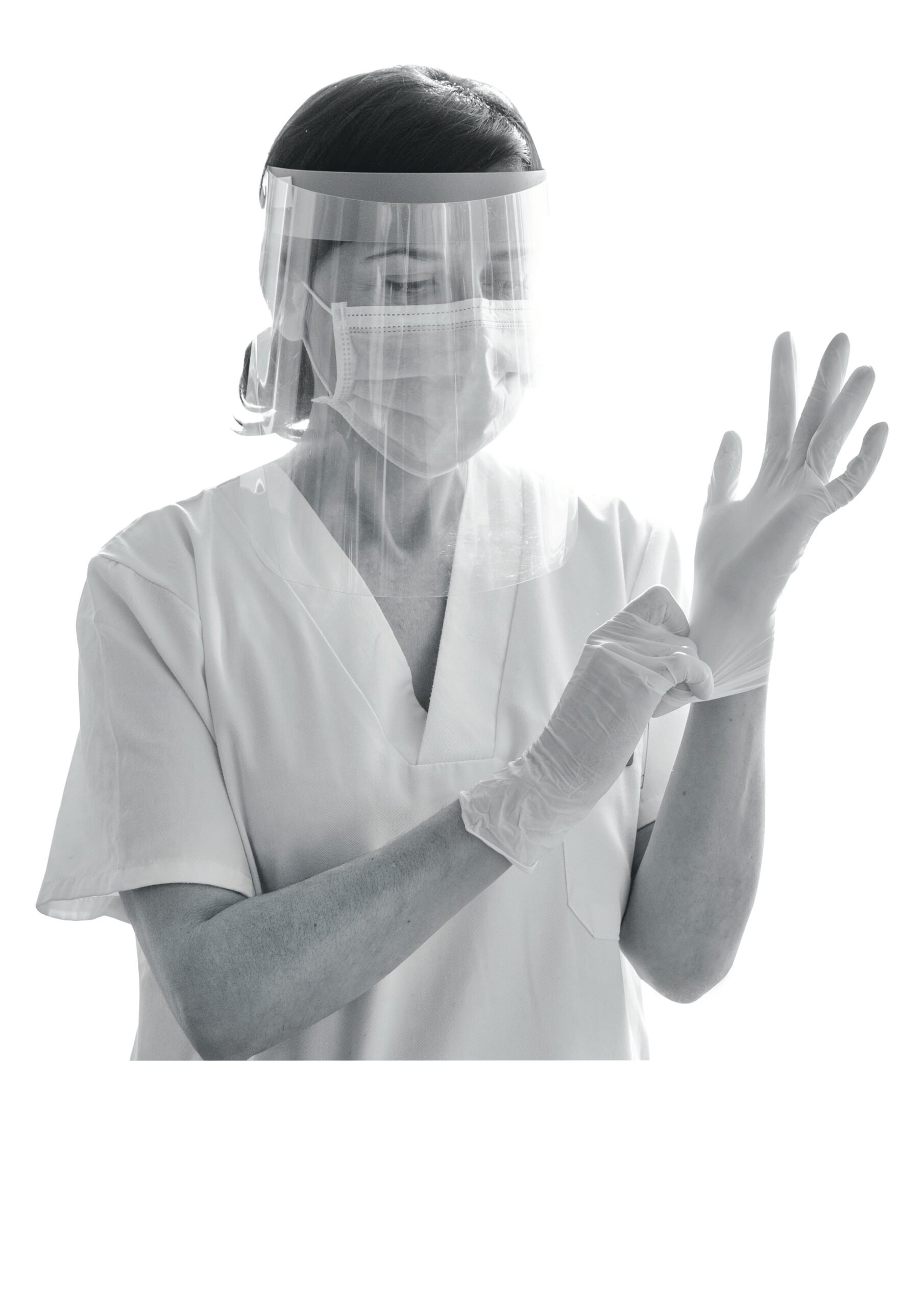
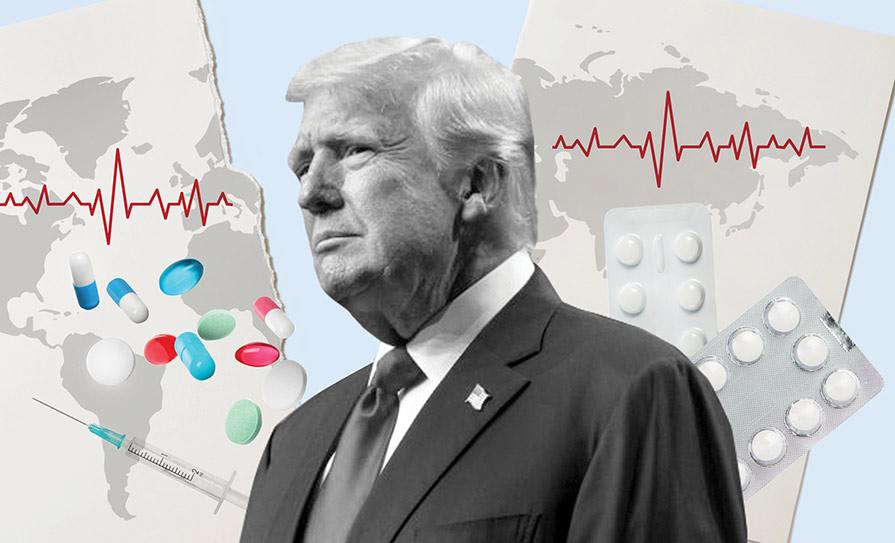




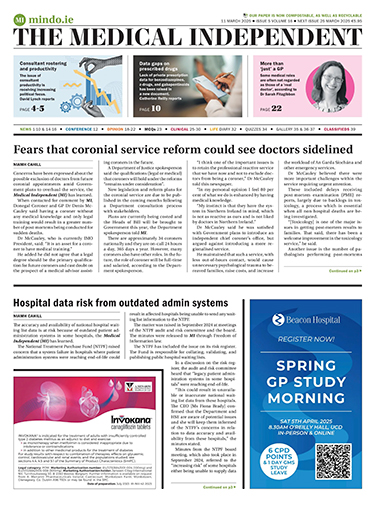






Leave a Reply
You must be logged in to post a comment.